After seven Serie A games, four teams are tied for the most headed goals, with AC Milan, Inter, Atalanta and Udinese all bagging four.
However, the outlier in that list of clubs is the latter, Udinese—their four goals equate to 40% of their total goal tally at the time of writing, indicating that aerial presence in attack is key to Kosta Runjaić’s tactics.
Data suggests that Udinese are not a possession-based team and that they tend to rely on long passes to make progress up the pitch.
This team analysis and scout report will provide some insight into Udinese’s attacking tactics so far this season.
It will look at three key areas: their crossing tendency, how they utilise an aerial presence in attacking phases, and their direct passing approach, including the use of a physical presence from the attacker in build-up phases.
Udinese Aerial Threat Inside The Box
So far this season, under Kosta Runjaić’s manager style, Udinese have deployed 3-4-3 or 3-5-2 most of the time.
This allows them to attack in wide areas and eventually create chances in the final third, where a strong aerial presence can be effective.
Udinese have a few options in attack, but their main two options in terms of physicality and aerial presence are former Aston Villa striker Keinan Davis, who stands at 6’2”, and Lorenzo Lucca, who stands at a gigantic 6’7”—he shows exceptional mobility for a player of his size as well!
The two forwards offer Udinese a range of attacking avenues to explore, the obvious one being the chance to intercept dangerous crosses.
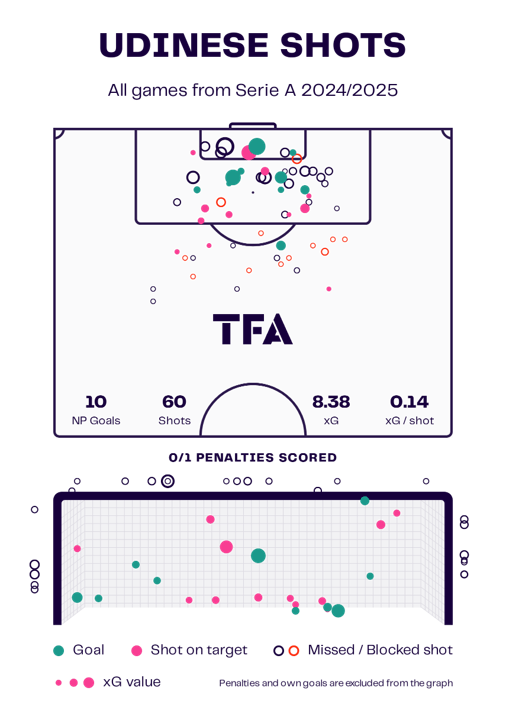
Udinese’s shot map this season in Serie A provides an insight into where their efforts on goal occur.
With 10 goals to date this season, they aren’t exactly a high-scoring team, but their rate of 1.3 goals per 90 minutes is above the league average.
Their rate of 7.92 shots per 90, however, is one of the league’s lowest currently, but as the analysis image above shows, they can be a threat when the opportunity arises.
From 10 games, Udinese have attempted 12 headed strikes, of which, as mentioned, four have resulted in goals – a clear aerial threat inside the box.
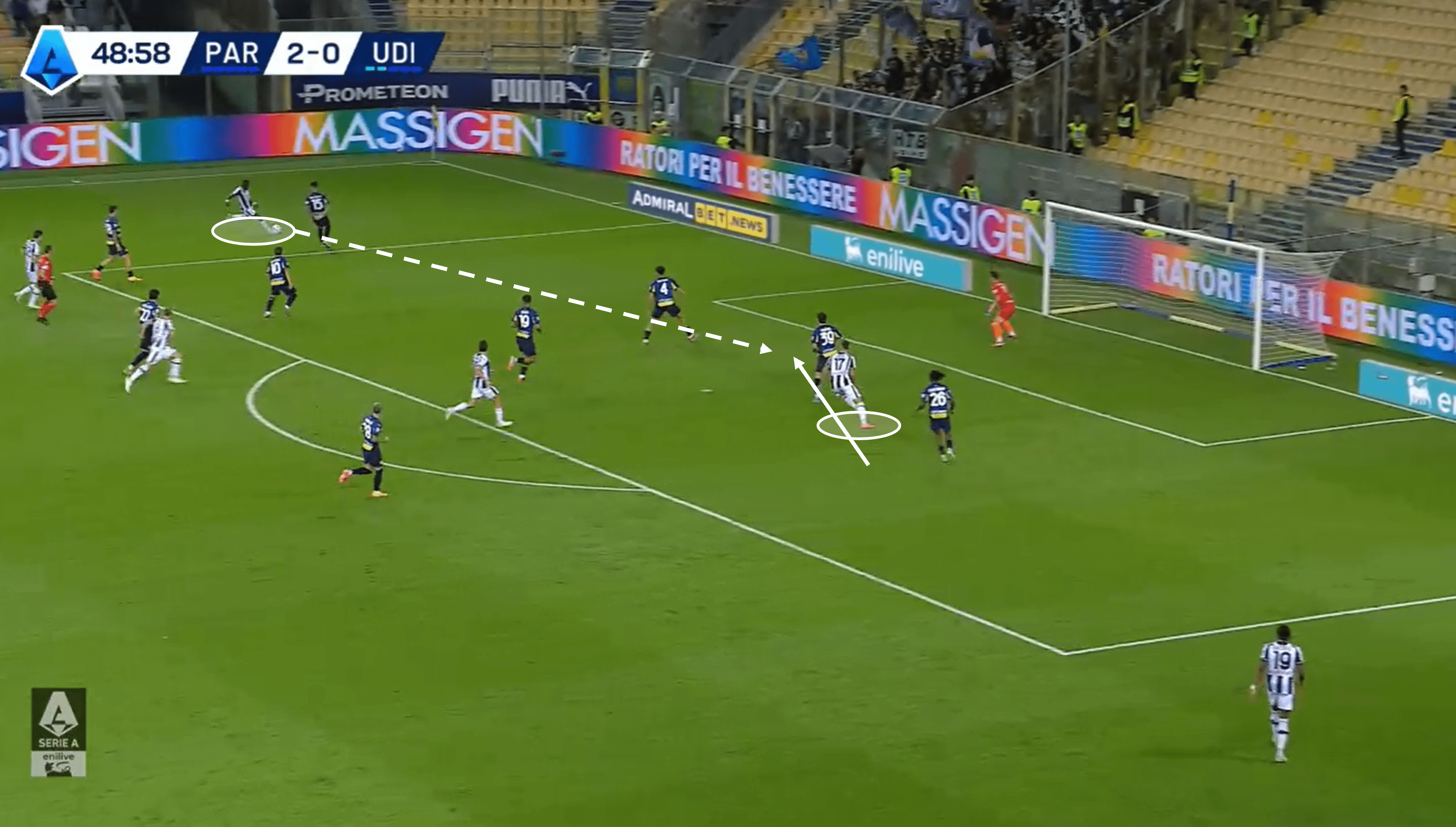
The key to utilising big forwards like Lucca is delivering effective crosses—accuracy, weight, and timing are all critical factors in an effective cross.
We’ll get into Udinese’s wide play in more detail later in this tactical analysis, but there is something to be said about their ability to finish off attacks with headers, and Lucca has scored two of them.
His size is obviously a threat that defenders are sure to be aware of, but his movement in the box is more difficult to anticipate and sometimes even harder to defend against.
The move above sees him start a little deeper in the box in regards to where the ball is, but just as the cross is about to come in, Lucca makes a darting movement in front of his marker – he meets the resulting cross to head home.
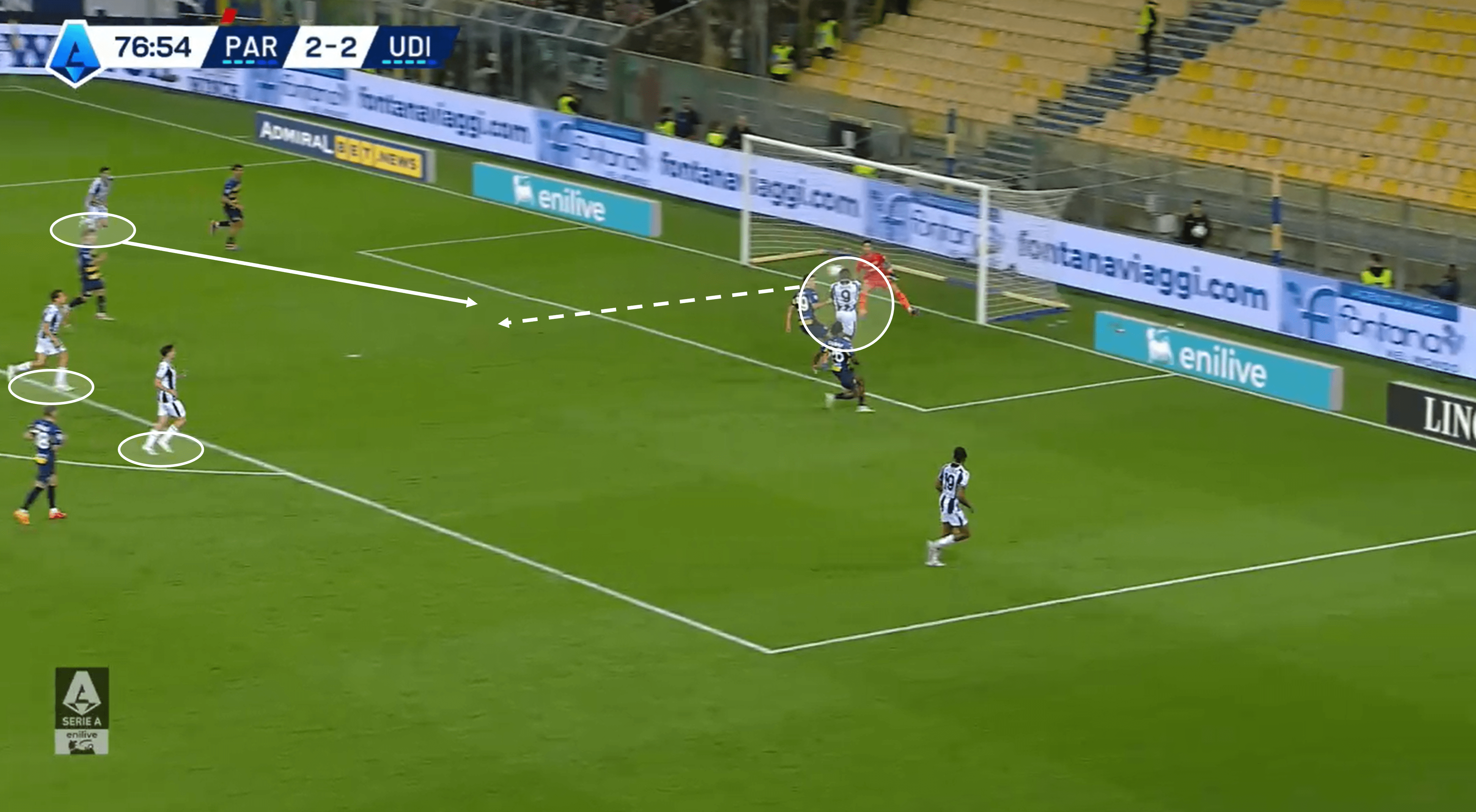
Scoring headers is not the only benefit of having an aerial presence in the box for Udinese.
As Figure 3 shows, an aerial presence can also be a creative force in the latter stages of an attack.
This example shows Davis winning a header from a cross from the left flank and, rather unselfishly, cushioning the ball down to one of the attackers in support.
This type of move has occurred for Udinese on more than one occasion this season, a sign that Runjaić is keen on making it a staple of their attacking tactics to truly get the full benefit over the course of the season.
Udinese Crossing Focus
As we mentioned, Udinese are keen on utilising crosses in their attacking tactics.
So far, they’ve made 13.9 crosses per 90, which is just above the league average at the time of writing – but when you consider they have one of the lowest rates for possession in the division, that 13.9 tells us just how vital crossing is to Udinese.
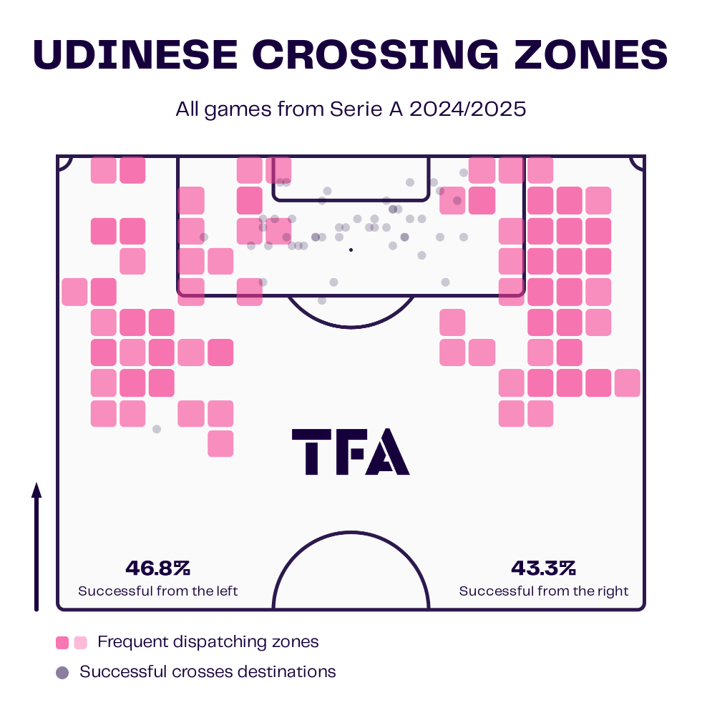
With 60 crosses from the left flank and 43 from the right, there is a slight preference to deliver the ball from that left side – they have had some good results in terms of crossing from the left this season already.
In terms of cross-location, you can see that crosses from the right are more likely to come from a byline position than crosses from the left flank, while deliveries from the left are more likely to go from slightly deeper positions in midfield.
At this moment, Udinese are Serie A’s most accurate crosses – 44.9% of their deliveries into the box are accurate.
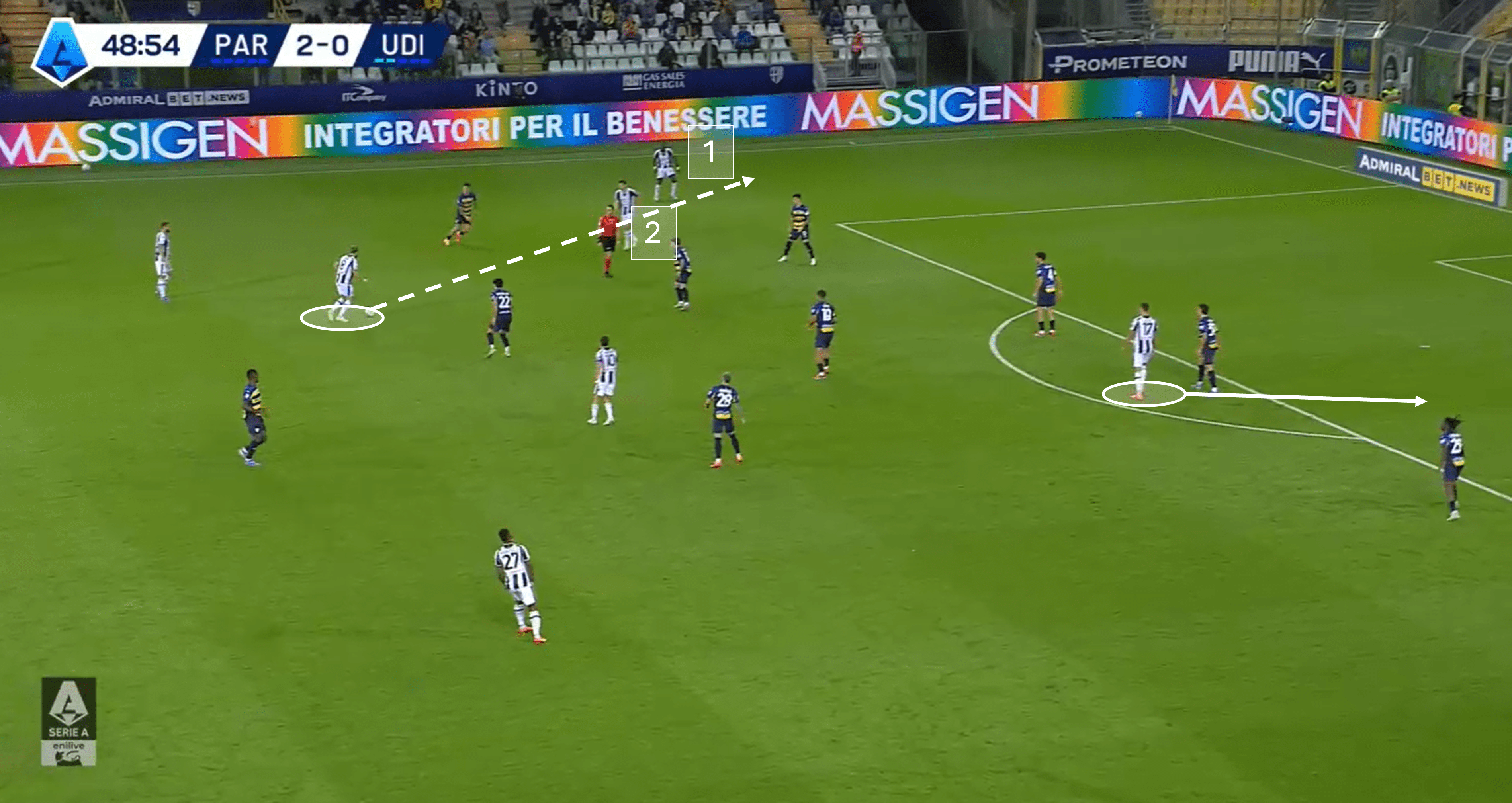
As shown in Figure 5, Udinese like to have a strong numerical presence on the flank of the attack to get into promising crossing positions.
This numerical presence allows Udinese to be more effective in working the ball into those wide areas, as the opposition is not likely to commit defensive numbers to mark every player—even if they did, the fluidity in these tactics means that a Udinese player can drift into a supporting position on the flank from elsewhere.
They are also able to use that numerical presence to clever effect – Figure 5 shows a pass that looked like it was making its way to the player marked as 2, but he cleverly dummied the pass, allowing the ball to roll into the path of the player marked as 1; he then had the time and space to deliver a cross.
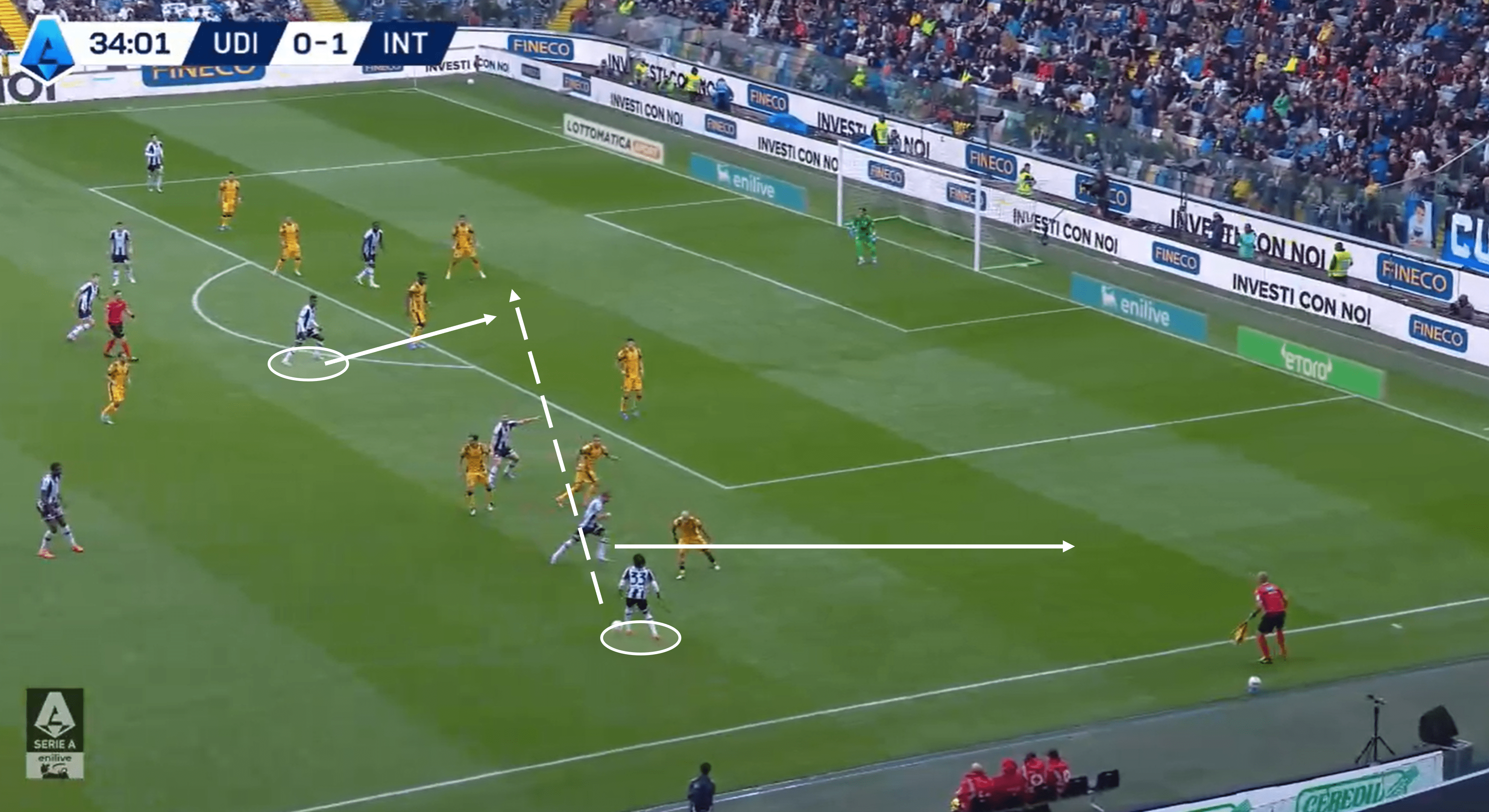
Off-the-ball movement is a crucial factor in Udinese’s attacking tactics, particularly in wide areas.
Figure 6 shows Udinese looking to keep the attacking pressure on following a failed corner attack and get the ball back into the mixer as quickly as possible.
With a clever decoy run from a nearby teammate and runs back into the box from players in a central midfield position, Udinese made this crossing opportunity a strong one.
Indeed, the highlighted runner was able to get on the end of an excellent cross and guide it home.
Udinese Direct Build-Up Play
In the
introduction of this tactical analysis, we touched on the fact that Udinese is not a possession-based team like Juventus, for example.
With an average possession rate of just 42.9%, under Kosta Runjaić’s style of play, Udinese have clearly found a knack for playing in a more direct fashion.
Le Zebrette averages 39.74 long passes per 90, which is Serie A’s sixth-highest rate.
This tells us how often Udinese use a more direct approach.
There’s a reason for their tendency to play this way, though – they’re good at it!
Their long pass accuracy of 61.8% is the second-highest rate in Serie A currently, so we know that Udinese is playing in a calculated way, not just hoofing the ball upfield and hoping for the best.This direct approach is evident in Udinese’s general possession and build-up, as we’ll touch on shortly, but similar fundamentals are also at play in their work in attacking transitions.
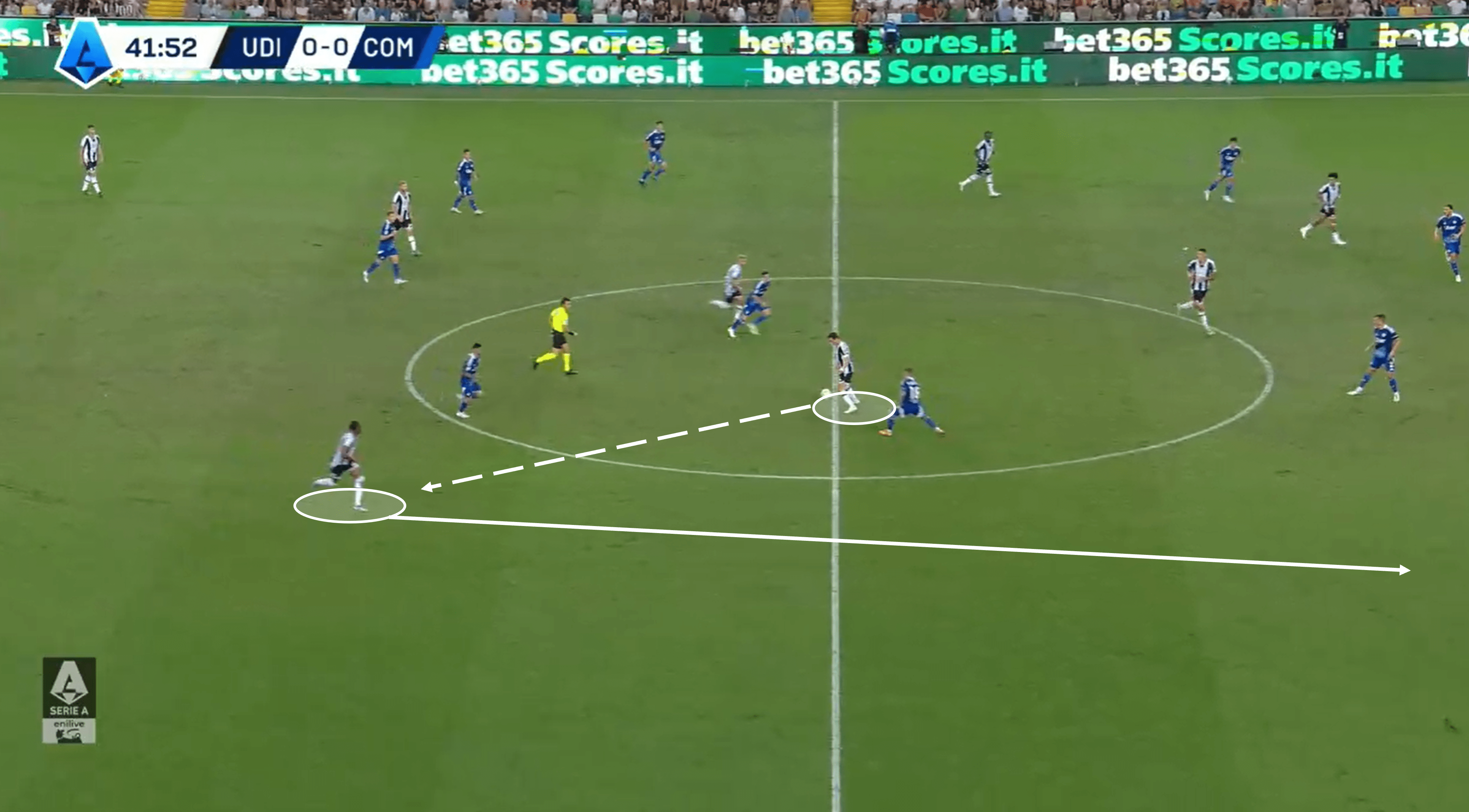
In those attacking transitions, the term ‘direct’ sometimes refers to more than just the type of passing being used.
Take Figure 7 as an example – the player on the ball does well to shield it, knowing that opposition pressure will arrive at any second.
Additionally, as soon as the chance of an attacking transition presented itself, several Udinese players shared the same body language and started to make forward runs into space.
The nearby supporting player making his run toward the right flank received the ball from the centre and showed us how teams could be direct without long passing – by driving all the way toward the opposition penalty area before delivering a well-executed cross that was finished off by a teammate.
Being this direct in attacking transitions can and, in Udinese’s case, has hurt teams.
Instead of playing a safe pass or trying a ridiculously unrealistic through pass, the Udinese individual displayed classic winger traits by dribbling the ball to a long-distance forward.
Yet this mirrored the mentality of his teammates, who initially made forward runs when they recognised the chance to push forward.
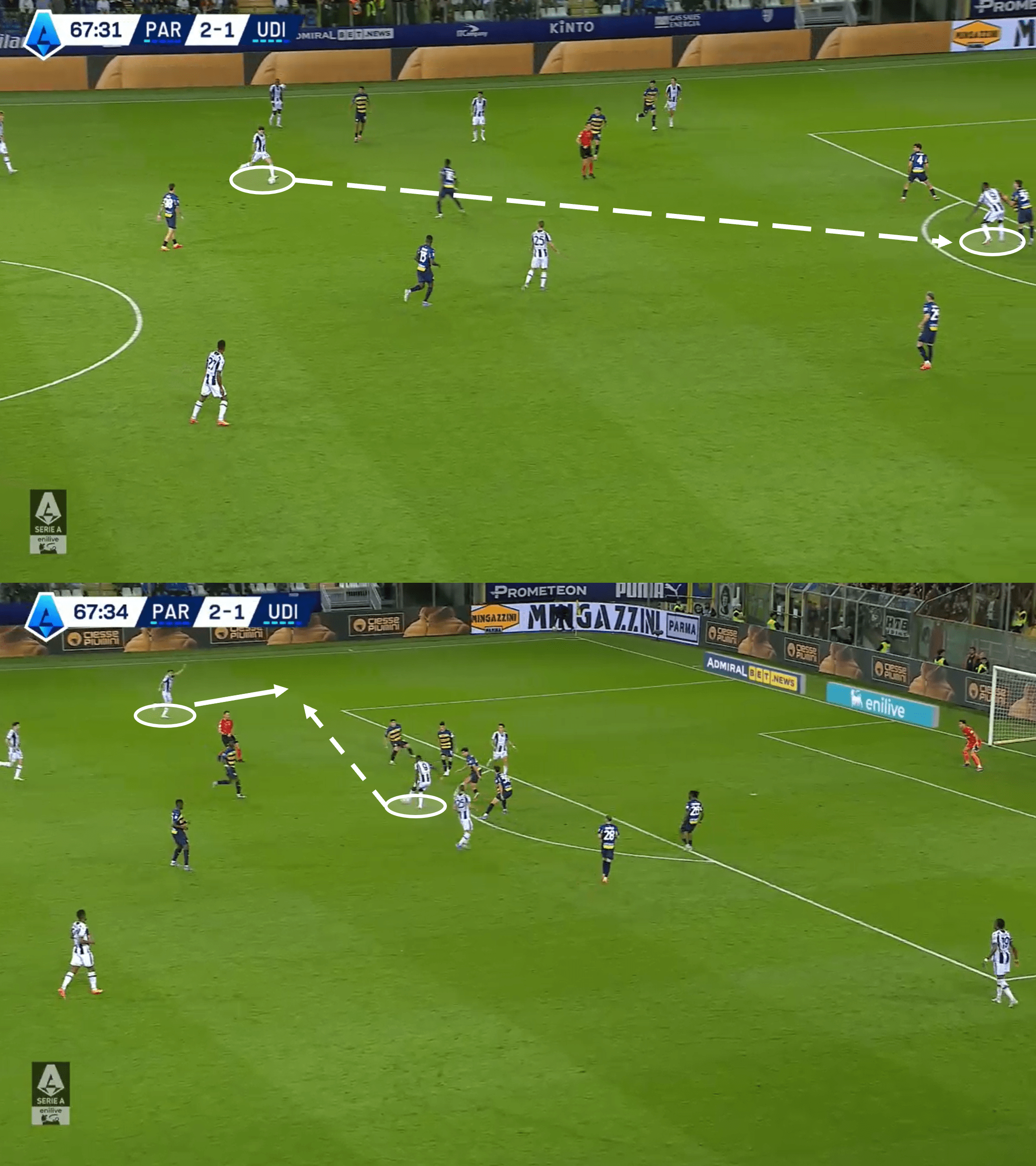
We’ve already touched on three ways that Udinese like to be direct on the ball: crossing, long passing, and attacking in transitions.
As Figure 8 shows, a fourth direct way they play is by utilising their target centre-forward in build-up play phases.
These are vintage tactics that have stood the test of time – a big forward coming in a little deeper to assist the midfield instead of making runs in behind the defence.
This example shows us Keinan Davis playing this role exceptionally well – coming in to a suitable support position to receive the ball directly from midfield, before playing a quick pass out to the winger.
Udinese executed this move very quickly.
With just two passes and not many more touches, they worked the ball into a very dangerous crossing position.
Conclusion
It is still early, but Kosta Runjaić’s style of coaching has started his Udinese reign with a bang.
Udinese narrowly avoided relegation to Serie B last season.
Still, under Runjaić’s fresh management and tactics, they seem to have transformed into a team with a genuine and effective attacking identity.
They currently sit fifth in Serie A, joint second on points, though – a solid start indeed.

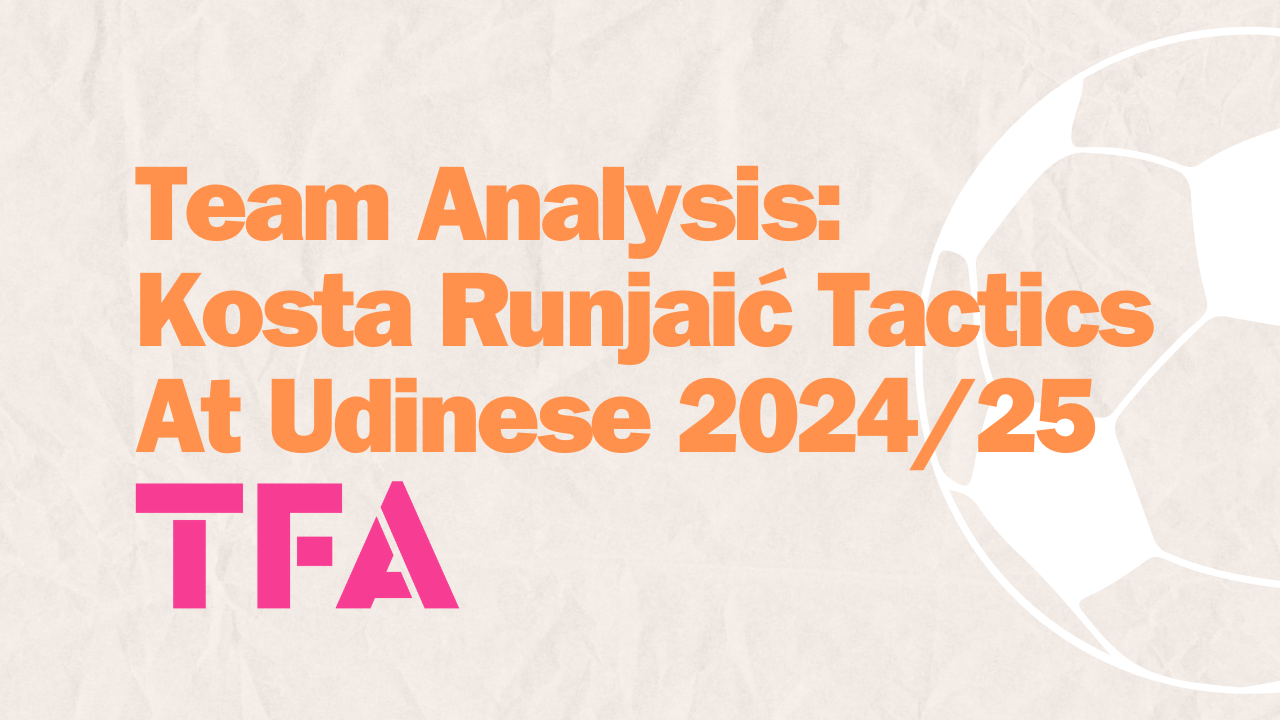




Comments